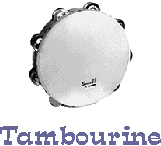Auxillary Instruments
Auxillary Instruments
Contents :
Castanets
In ancient times wood and ivory instruments similar to castanets were struck together. Ivory and bone clappers were used in ancient Egypt. They are believed to be of oriental origin. Castanets came to Spain via Africa in the Middle Ages.
Today castanets are commonly made of chestnut. The name castanets is derived from the Spanish word castaña, meaning "chestnut".
The castanets are percussion instrument consisting of a pair of hollow shells of hardwood, ivory, or composition material. They are loosely bound together by a cord.
The performer generally fastens the cord around the first finger and thumb of the hand. Sound is produced when the other fingers strike the castanets together. Castanets can also be fastened to a long handle with cords and the sound is produced when the two hit each other. This produces a hollow, clicking sound.
Castanets are mainly used to accent the rhythm of a Spanish piece of music being performed. They may also be played by female performers of Spanish dances. In this case one instrument is held in each hand.

Top
Triangle
The triangle became known in Europe by the 14th century. Early forms of this type of instrument were often stirrup-shaped or a trapeziod. The actual name was not recorded until 1589. It often had jingling rings attached to it until about 1800.
Turkish military music contained triangle parts during the 18th century. This aided in the introduction of the triangle into the orchestra. It soon became a regular member.
The triangle is a percussion instrument of indefinite pitch. It consists of a steel rod bent in the shape of a triangle. It is open at one corner.
Sound is produced by suspending the triangle by a string and striking it with a steel beater.

Top
Tambourine
The tambourine is traditionally a woman's instrument in Islamic countries, as it was in biblical times and medieval Europe. It is believed to be of Near Eastern origin.
Shallow frame drums with one or two heads also served as ritual instruments for shamans, or medicine men, throughout Central Asia and Siberia and among some North American Indian tribes.
The tambourine is a shallow one-headed drum with loose metallic disks attached to the sides. The head is nailed over a wooden hoop 10-12 inches in diameter and 3 inched in depth. The metal jingles are 2 inches in diameter and are inserted in holes cut into the frame. It is called a frame drum because the drum shell is so shallow that it cannot act as a resonator.
Sound is produced by shaking or striking the tambourine with the fingers or closed knuckles. It can also be rubbed to produce sound.

Top
